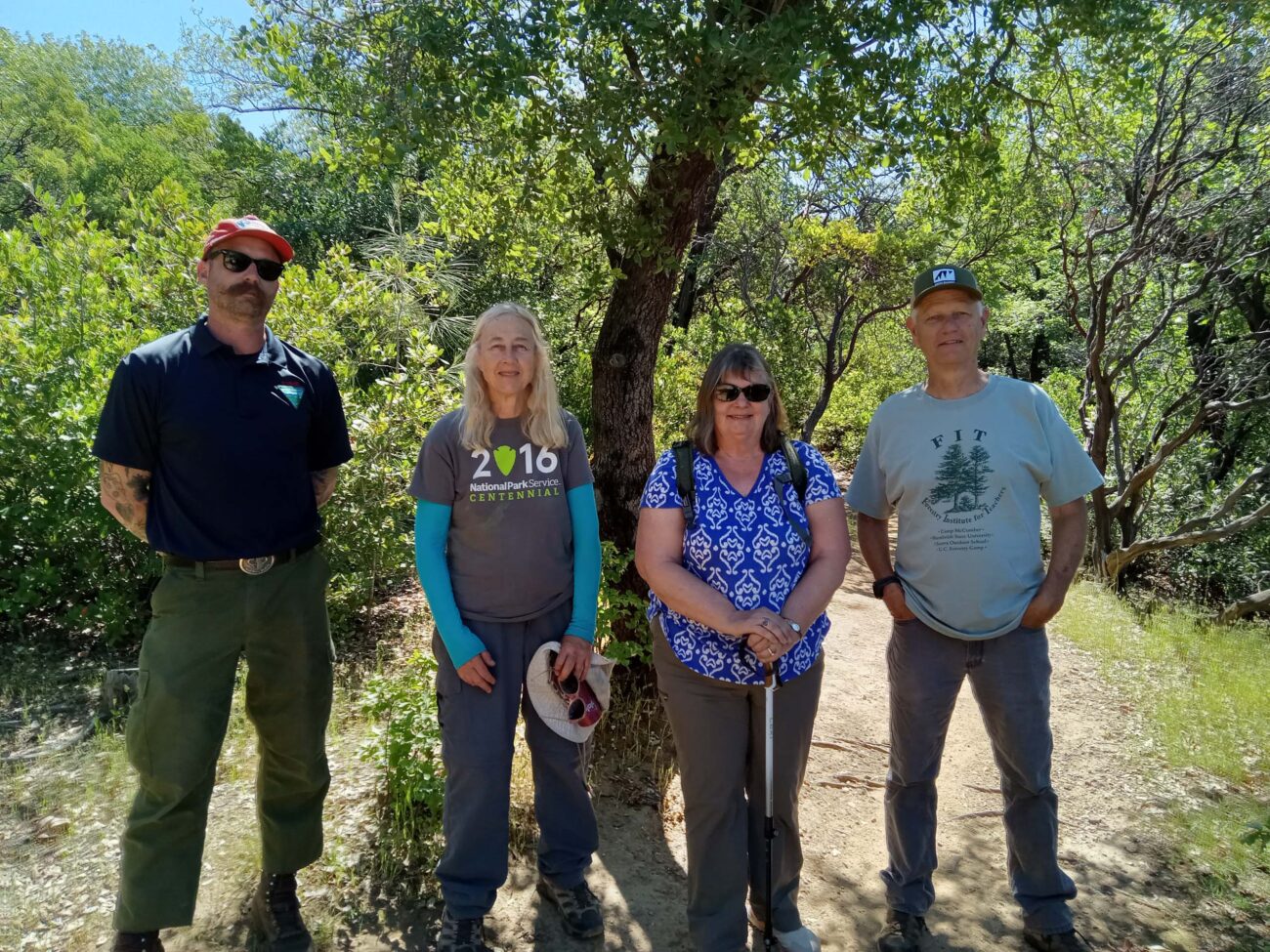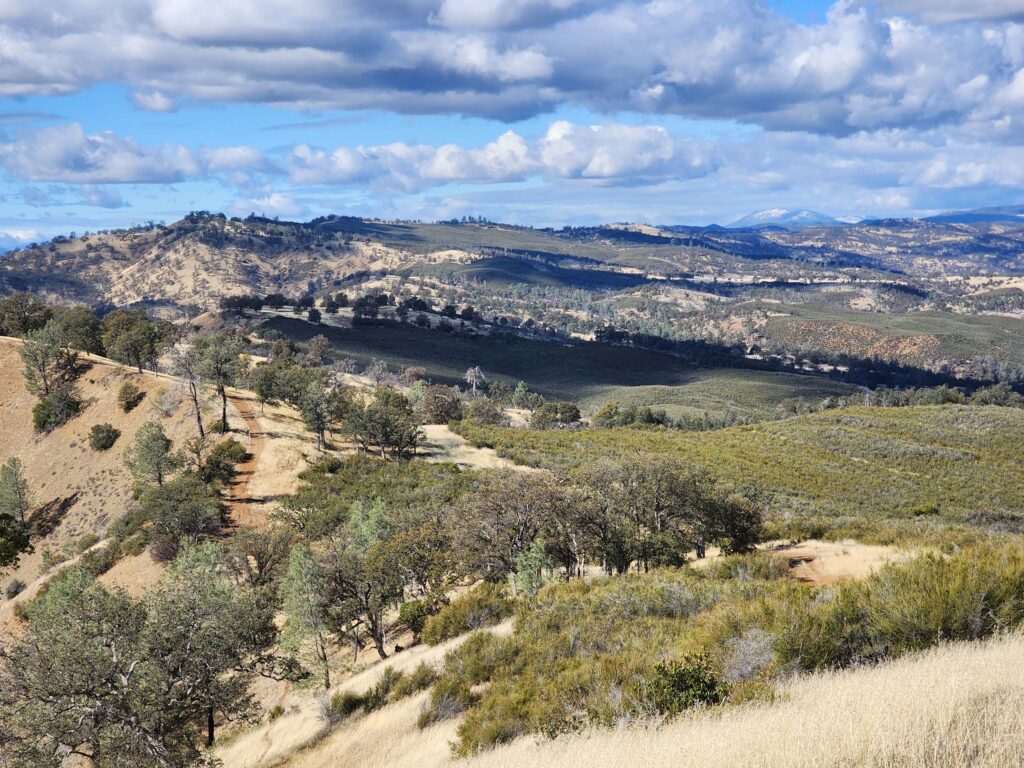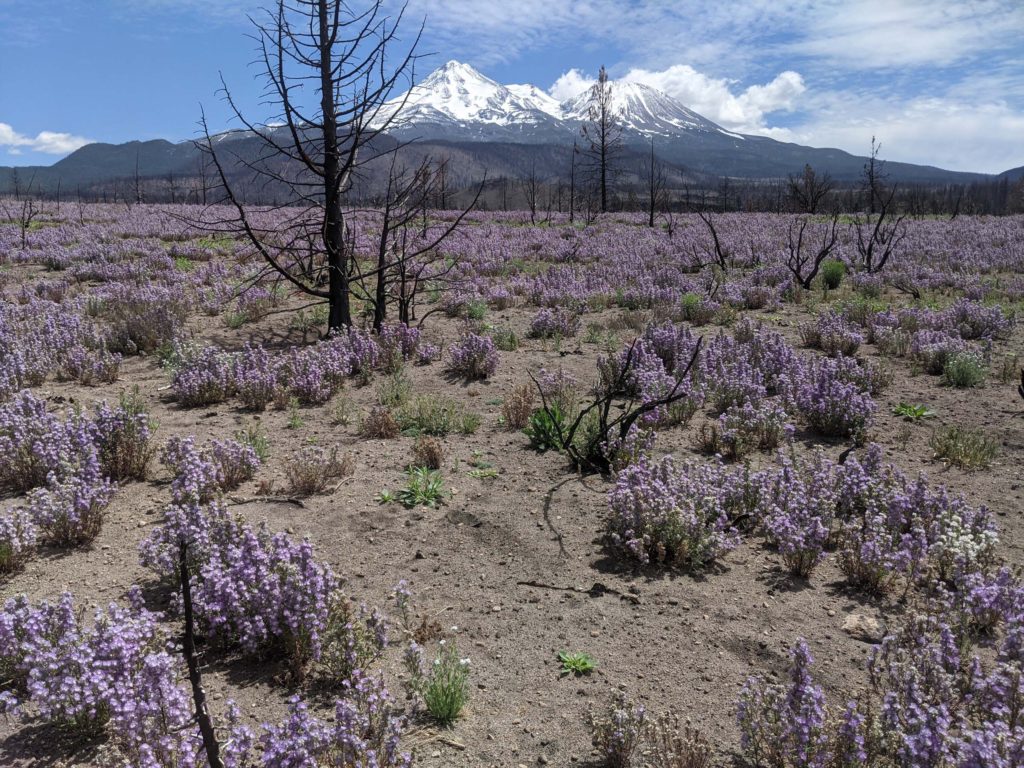
Bureau of Land Management’s (BLM) proposed fire treatment plan for the 500 acres in the area surrounding Hornbeck Trail, Redding, was the focus of this field trip co-led by BLM Ecologist Brooke Thompson and BLM Fire Management Officer Garrett Dunn.
This area supports gray pine and oak woodland, with a considerable chaparral understory. Brooke stated that BLM has to do a vegetative treatment here because 100 years of fire suppression has caused a huge fuel build up. Encroachment of homes into wildland areas such as these have created heightened fire danger. Because the area is so close to homes, utilizing a fire treatment (prescribed burns) is not safe. Therefore, BLM will primarily employ mechanical methods of reducing shrubs and tree cover, limiting burning to burn piles.
Chaparral will burn naturally every 30 to 100 years, rejuvenating the habitat by allowing more nutrients and water to get to trees, and by opening spaces for grasses and flowering plants to grow. The shrubs will come back too, but stay less dense for many decades as trees take up more of the space and shade out much of the brush. In a severe burn, chaparral will take over until trees grow and overtop it, eventually out-competing the shrubs. Many seeds in chaparral, both shrub and herb, can remain dormant in the soil waiting for a fire to germinate and spring to life. In this sense, fire is good—except when houses are nearby.

Garrett stated that trees will be thinned to 30 feet apart, as will clumps of shrubs. Larger logs, over 10 to 12 inches, will be left on the ground to create habitat diversity, and to allow for slow decay to release nutrients. Smaller trees and shrubs will be masticated and, in some cases, burned in place. While many of us do not like to see vegetation removed, the methods BLM are using will in some ways mimic a low-intensity fire and still leave habitat for wildlife. There will be some burning of piles on site; the heat from the fire and the chemicals from the smoke can break the protective seed coat of dormant flowers, which will provide a wildflower bonanza in the spring. Burns of understory shrubs almost always provide a bonanza of wildflowers the following spring. ~David Ledger

